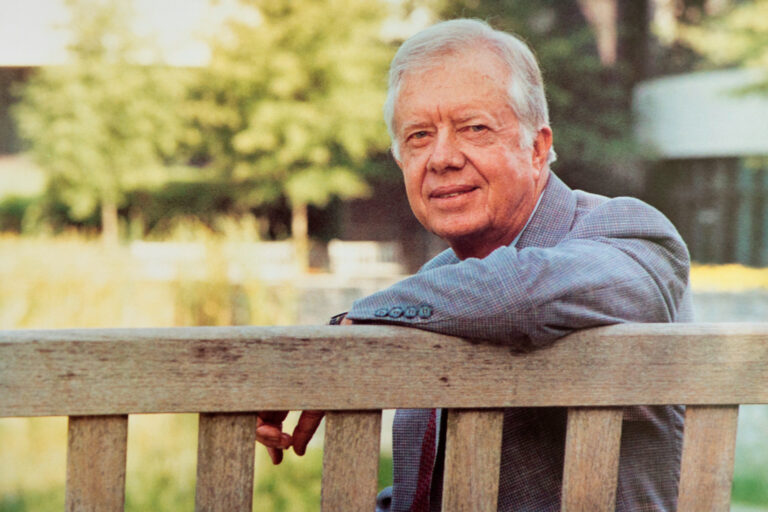(Photo by Spc. Leith Edgar via Wikimedia Commons)
In this two-part series, author Alex Simon discusses the evolution and increasingly fragmented nature of Sunni tribalism in Iraq from the era of Ottoman occupation through the rise of the so-called Islamic State, and its implications for the future of the Iraqi polity. Read Part II here.
Alex Simon
Part I:
In footage from April 2015, dozens of elderly, gray-bearded Iraqi men in traditional dress gather to affirm their allegiance to the self-proclaimed Islamic State (IS) and its leader, Abu Bakr al-Baghdadi. The clip, entitled “Ninewa’s tribes renew their pledge of loyalty and prepare for battle,” is a characteristically slick piece of IS propaganda: In classical Arabic, tribal sheikhs extol the righteousness of the Caliphate as the camera pans across a rapt audience including, allegedly, the leaders of thirty different tribes in northern Iraq. In the end, the men collectively swear fealty to Baghdadi and declare their readiness to fight off the long-anticipated push by the Iraqi government to evict IS from Mosul, the group’s Iraqi capital.[1]
The video reveals much about the complex role of tribes and tribalism in Iraq’s convoluted political landscape, particularly among the country’s Sunnis. At a practical level, tribal leaders like those mentioned above command local constituencies, often in remote territory inhospitable to external interference; this makes tribal support a vital asset to any outside actor—be it IS, Baghdad, the US military, or others—seeking to exert control over tribal areas. Tribalism’s importance is also symbolic: tribal values and vernacular are frequently invoked in Iraqi political discourse, often intended (as in the video) to connote indigenousness and therefore legitimacy.
Yet the IS narrative is also misleading: the implication that “Ninewa’s tribes” writ large, or even the particular tribes mentioned in the video, uniformly support the jihadist group obscures the enormous complexity, fractiousness, and fluidity of Iraqi tribal loyalties. Indeed, the video itself quickly drew condemnation from Ninewa sheikhs adamant that the meeting was illegitimate and unrepresentative, and that the figures involved were small-time opportunists rather than major leaders.[2]
This nuance tends to be lost not only in jihadist propaganda, but also in Arab and western commentary that frequently references Iraq’s Sunni tribes as coherent wholes, if not as some monolithic Sunni tribal bloc. While this tendency toward oversimplification may be due in part to carelessness or simple confusion on the part of commentators, it also reflects the fact that tribes and tribalism are, in their current incarnations, such amorphous and ill-defined concepts that even well-informed locals may struggle to explain them with any precision.
The goal of this paper is to unpack the question of what Iraq’s tribes are and what they are not, beginning with the question of what these tribes were and how they transformed under the modernizing forces of the late nineteenth, twentieth, and early twenty-first centuries. This historical perspective brings into focus an ongoing drift toward tribal fragmentation and disempowerment, with Iraq’s tribes becoming gradually less coherent and more dependent on external sources of legitimacy and resources. Thus, while tribal sensibilities and solidarities remain an entrenched feature of the country’s social and political environment, the tribes themselves are weaker, more divided, and less autonomous than ever before. While these divisions pose immediate challenges for Western and Iraqi policymakers seeking to engage tribal Sunnis in combatting IS, a still greater task will await when, in a post-IS Iraq, it comes time to reconfigure the broken pieces of the Iraqi state.
Early cracks in Iraq’s tribal structure
Writing in 2002, Iraqi sociologist Faleh Abdul-Jabar summarized the challenge of analyzing tribal dynamics in Iraq and beyond:
The tribe is perhaps the oldest, most enduring and controversial social entity in the Middle East…[it] has sustained incessant change, acting in and reacting to a changing political, military, economic and at times even topographical environment. The extent of this change has been so great and so diverse that it has defied any meaningful and applicable generalization as to what the tribe has come to be.[3]
Indeed, perhaps the most obvious generalization that can be made about Iraqi tribalism’s evolution since the 19th century is that tribal identity has been gradually diluted and fragmented—rendered, in a word, less generalizable. Political scientist Myriam Benraad describes this “deconstruction,” noting that Iraq’s tribal identity has “always been characterized by intense endogenous rivalries and factionalism, which have only tended to increase as traditional solidarities… have endured profound changes over time. Today, one might even wonder whether Iraq can still be described as a ‘tribal’ society in the classical sense of the word.”[4] A second, closely related generalization regards the erosion of tribal independence in the modern era, with formerly autonomous tribes increasingly subject to and dependent on emerging state institutions.
An analysis of these trends must look back at least to the early 1800s, when the Ottoman territory that is now Iraq was dominated by tribes in the “classical sense.” Anthropologist Hosham Dawod explains that these earlier tribes comprised “an ensemble of individuals and groups speaking the same language and dialect” and affiliated by ties of blood and intermarriage. The maintenance and defense of some physical territory was of paramount importance: “in fact, what is called ‘ashira [tribe] is a socio-political entity which exercises a large or limited sovereignty over a determined territory.” In this setting, the political authority of a given sheikh derived not from his bloodline but from his ability as a leader to maintain order within the tribe and strength vis-à-vis the outside world: “Hence the members of a tribe are associated with the sheikh’s control of the territory and its resources.”[5]
These realities began to transform under the Ottoman Tanzimat reforms of the 19th century, during which the Ottoman Empire set about centralizing its control over its territories and overhauling the existing system of land tenure. By granting powerful sheikhs territorial ownership, Constantinople encouraged tribal sedentarization while creating a novel landlord-peasant hierarchy in which powerful landowning tribes and tribal factions dominated weaker, landless ones. Land reforms, coupled with the expansion of centralized Ottoman power, effectively transformed the sheikhs “from independent warriors into tax collectors or state vassals, better still, agents.”[6]
This process—whereby formerly independent tribes were gradually tethered to emerging state structures and increasingly divided in the process—continued and accelerated through several stages in the twentieth and early twenty-first century. Administrative reforms under the British mandate and then Hashemite monarchy from 1921-58 reserved a measure of authority for tribal sheikhs favored by the mandatory government, but nonetheless continued to chip away at tribal independence in military, economic, and judicial affairs.[7] Tribalism was suppressed more forcefully under successive military governments beginning in 1958, and particularly under the Baathist regime that emerged in 1968. From the 1970s, new land reforms, large-scale urbanization, and the active subversion of tribal authority structures—viewed by the Baath as anathema to both its message of Iraqi national unity and its own consolidation of power—further undermined tribal autonomy.[8]
In light of these dynamics, Dawod argues that Iraqi state-building brought about nothing less than “the disappearance of tribal organizations to the extent that the tribe is a political entity requiring certain autonomy of decision-making in order to continue to exist.”[9] Even stripped of the critical element of the key element territorial independence, however, Iraq’s tribal substructure continued to heavily shape Iraqi society and politics. At the community level, particularly but not exclusively in rural areas, solidarities within and between family units continued to operate in forms “more or less similar to classic tribal organization.”[10]
At the level of national politics, meanwhile, Saddam Hussein leaned heavily on precisely these solidarities as a means for ensuring loyalty to his rule. In particular, he filled the security services with members of his own Albu Nasir tribe and others from the same lower class rural environs around his hometown of Tikrit.[11] Tacit reliance on tribal loyalties deepened under the strain of the Iran-Iraq War and domestic uprisings in the 1980s; by 1991, the convergence of post-Gulf War political, economic, and military crises prompted Hussein to shift toward overt endorsement of tribal identity and the empowerment of loyalist tribes to extend Baghdad’s influence to rural areas beyond the writ of a broken central government.[12] Particularly striking in this respect was Hussein’s practice, adopted in 1993, of convening tribal sheikhs to affirm their allegiance to his leadership, in much the same fashion as the above episode involving today’s tribes and Abu Bakr al-Baghdadi;[13] then, as now, a transaction was implied whereby Hussein received loyalty and submission from the tribes, who in turn enjoyed a measure of local autonomy and, to varying extents, material compensation.
While the “neo-tribalism” of the early 1990s might seem a sort of renaissance for Iraqi tribal society, Baram and others have stressed that “the reconstructed and empowered tribes [had] little in common with the old tribe.”[14] Many individuals who gained influence through this process belonged to tribes that had effectively disintegrated and thus enjoyed little authentic legitimacy, earning them the derisive labels “sheikhs made in Taiwan” and “sheikhs of the 1990s.” [15] Thus, while the tribalism that defined life in Iraq up to the late nineteenth century hinged on tribal independence, self-sufficiency and intra-tribe solidarity, that which had evolved by the end of the twentieth century was dependent on the Baathist regime’s largesse and divided along the fault lines that this produced.
Tribalism under occupation
Beginning with the Ottoman Tanzimat, the tribes of Iraq entered a new stage in which success depended ever less on independent agriculture and war-fighting and more on cooperation with and submission to some central authority, from Ottoman governors to the Hashemite monarchy to successive authoritarian regimes. Following the American invasion and occupation of 2003, a new patron emerged in the form of the US-led coalition forces. Beginning in 2006 and 2007, the coalition worked to co-opt Sunni tribesmen through the so-called Sunni Awakening, whereby American forces provided funding and some weaponry to tribal actors in exchange for the latter’s cooperation in monitoring, reporting, and suppressing the insurgency of al-Qaeda in Iraq (AQI). The partnership was welcomed by those among the tribes whom AQI had alienated through its penchant for brutal violence, including the assassination of tribal notables; its forceful imposition of a harsh, austere understanding of Islam viewed by many as alien; and its disruptive influence on local economic activities such as smuggling.[16]
While successful in driving AQI out of its strongholds, the Awakening phenomenon also introduced new divisions and tensions into both intra-tribal and tribe-state relations. The International Crisis Group (ICG) noted in 2008 that the coalition was, by necessity, “more generous with some tribes than with others,” creating the possibility for potentially violent rivalries; it was during this period that a new derisive moniker, “chieftains of the 2000s,” emerged in reference to the US-backed sheikhs.[17] At least as worrying was the question of how these tribes would, following an inevitable decline in American patronage, relate to a new, Shiite-led government that showed little desire to integrate them into the new state. As ICG warned at the time, there existed the risk that, “without US backing, the [Awakening sheikhs] would fade away or offer themselves up to the next highest bidder.”[18]
Indeed, once the coalition transferred responsibility for the Awakening to the government of Nouri al-Maliki in 2008,[19] relations between Baghdad and the tribes quickly deteriorated. The former showed no interest in incorporating the Awakening’s elements into the state apparatus; on the contrary, Baghdad set about undermining the tribes’ resurgence by cutting the Awakening’s funding, detaining tribal leaders and pursuing a strategy of “divide and conquer,” further splitting the already fractious tribal space by co-opting particular leaders while marginalizing others.[20] In 2009 Baghdad reportedly arrested over 40 Awakening sheikhs[21] while offering employment to only a fraction of the tribesmen formerly on the Awakening payroll; some of those who did find employment reportedly quit when the government failed to pay their salaries.[22] These policies belonged to a more generalized drift toward government repression, with Baghdad accused of carrying out mass arrests, torture, and assassination of political opponents following the US withdrawal in 2011.[23]
Maliki’s persecution of the Awakening and increasingly flagrant sectarianism coincided with a concerted effort by AQI to lure back disaffected tribesmen while eliminating those who continued to oppose it: long before the American withdrawal in 2011, al-Qaeda embarked on a sustained assassination campaign of Awakening leaders while offering to pay those who returned to its ranks at a higher rate than that offered by Baghdad.[24] A former Awakening leader thus explained that, as of 2010, “Awakening members have two options: stay with the government, which would be a threat to their lives, or help Al Qaeda by being a double agent.”[25] These tactics only escalated amidst the protest movement that swept Sunni Iraq in 2013, with AQI launching suicide attacks against former and current Awakening fighters.[26] The combination of government neglect and AQI intimidation was enough to split the Awakening into a number of competing substructures, some allied with Baghdad and others arrayed against it.[27]
Alex Simon is a second-year Master of Arts Candidate at Johns Hopkins School of Advanced International Studies (SAIS), where he is concentrating in Conflict Management. He is also a consultant with Synaps, a Beirut-based start-up. He has lived and worked in Lebanon and Jordan as a researcher and analyst, including as a Fulbright Fellow, a researcher with the International Crisis Group, and a summer 2016 Fouad Ajami Fellow in Beirut. He holds a Bachelor’s degree in International Relations from Princeton University.
____________________________________________________________________________
[1] The video is available, in Arabic, at http://www.alwatanvoice.com/arabic/news/2015/04/01/689957.html. For discussion in English, see Saleh Elias, “IS courts Ninevah tribes in run-up to battle,” Al-Monitor, April 23, 2015.
[2] Elias.
[3] Faleh Abdul-Jabar, “Sheikhs and Ideologues: Deconstruction and Reconstruction of Tribes under Patrimonial Totalitarianism in Iraq, 1968-1998,” in Tribes and Power: Nationalism and Ethnicity in the Middle East, eds. Faleh Abdul-Jabar and Hosham Dawod (London: Saqi Books, 2002), 72.
[4] Myriam Benraad, “Iraq’s Tribal ‘Sahwa’: Its Rise and Fall,” Middle East Policy Council, Vol. 18, No.1 (Spring 2011).
[5] Hosham Dawod, “The ‘State-ization’ of the Tribe and the Tribalization of the State,” in Tribes and Power, 116.
[6] Jabar, 76.
[7] Ibid, 76.
[8] Measures to curtail tribal influence included, for instance, expropriating land from large tribes and transferring it to smaller ones. For detail, see Amatzia Baram, “Neo-Tribalism in Iraq: Saddam Hussein’s Tribal Policies 1991-96,” International Journal of Middle East Studies, Vol. 29 (1997), 4-5.
[9] Dawod, 117.
[10] Ibid, 117.
[11] Baram, 5.
[12] Among other benefits, favored tribal leaders received limited quantities of light arms and ammunition, diplomatic passports, and privileged access to land and government rations during a period of great hardship under UN sanctions. See Jabar, 92.
[13] Baram, 11-12.
[14] Jabar, 94
[15] Ibid., 94
[16] “Iraq after the Surge I: The New Sunni Landscape,” International Crisis Group, April 30, 2008, 13-14,
https://d2071andvip0wj.cloudfront.net/74-iraq-after-the-surge-i-the-new-sunni-landscape.pdf
[17] Ibid., 15
[18] Ibid., 15
[19] Nouri al-Maliki governed Iraq as Prime Minister from May 2006 until his resignation under pressure in September 2014; at time of writing, he continues to occupy one of Iraq’s three vice presidential seats.
[20] Benraad.
[21] “Loose Ends: Iraq’s Security Forces between US Drawdown and Withdrawal,” International Crisis Group, October 26, 2010.
[22] Shashank Bengali, “With U.S. Presence Fading in Iraq, Ex-militia Faces Uncertain Future,” McClatchy, December 6, 2010.
[23] For discussion of abuses under Maliki, see “Iraq: A Broken Justice System,” Human Rights Watch, January 31, 2013.
[24] “Iraqi Qaeda offers cash to lure former allies,” Associated Press, August 7, 2010.
[25] Timothy Williams and Duraid Adnan, “Sunnis in Iraq Allied with US Rejoin Rebels,” New York Times, October 16, 2010.
[26] See, for example, Duraid Adnan, “Sunni Lawmaker in Iraq Is Killed in a Suicide Bombing,” New York Times, January 15, 2013.
[27] Ali Abel Sadah, “Iraqi ‘Sahwa’ Forces Elect New Leadership,” Al-Monitor, March 1, 2013.



